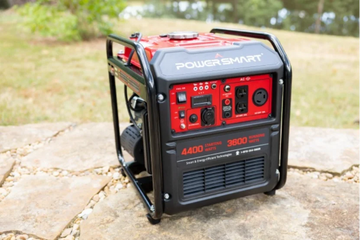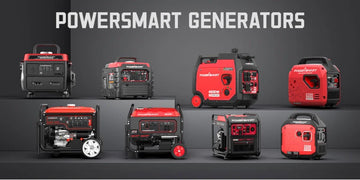
Arrival of winter season would normally lead to heavy snow falling on driveways, sidewalks, and lawns. But if you follow the correct approach and methodology, you can easily clear the snow without putting much effort into it. Being a beginner when it comes to snow blower or simply wanting to improve the process of clearing snow, below 15 tips of experts shall lead you towards the completion of the task quickly and hassle-free.
Start Preparing Even Before Snowfall
1. Begin Early to Avoid Snow Piling
Don't wait for snowfall to end—start removing snow as early as possible. Fresh, light snow is easier to remove than hard, packed snow. During a prolonged storm, remove in phases to avoid piling and minimize workload. This avoids heavy piling and saves backbreaking work of hardened snow.
2. Treat Surfaces Before Snowfall
Spraying de-icer or snow-melt product prior to snowfall will help prevent it from sticking to surfaces so it will be easily shovel-able. Calcium chloride or magnesium chloride works best, particularly on paths and drives. Pre-treating also cuts down on future unwanted shoveling and chipping of ice.
3. Plan Your Snow-Clearing Route Ahead
Plan ahead and save time and energy. Operate in a logical, sequential fashion—begin at one place and work straight through, even passes and do not need to be re-clearing the same areas over and over. If you have wind, position yourself so that you will not get snow blown back into cleared paths.
4. Vary Your Speed on Your Snow Blower for Efficiency
Different snow conditions require different speeds. Use a lower speed for heavy deep snow so that it does not clog and for full removal, and higher speed for light fluffy snow in order to take it off fast and efficiently. Speed modulation to suit conditions ensures best performance.
5. Attack Deep Snow in Layers
For heavy snowfalls, don't try to clear it all in one go. Clear the top layer and come back for the bottom layer. This prevents clogging and is easier on your snow blower. Where snowfall is heavy, clear snow frequently rather than leaving it until heavy.
6. Blow Snow Away from Obstacles
Always maintain the chute away from parked cars, fences, or walkways to avoid having to redo work. Where feasible, push snow onto yard or open areas rather than back onto sidewalks or driveway, where it will need to be shoveled out once more.
7. Don't Overload Your Snow Blower
Trying to remove too much snow at one time will overload your machine. Space passes and let your auger turn at its ideal speed. This prevents clogging and is the most efficient way. A constant, slow pace will give effective snow removal without overloading your equipment.
8. Wear Suitable Protective Equipment
Operating a snow blower requires warm but protective attire. Insulated gloves, protective goggles, and traction shoes will stop slipping. Ice cleats or traction spikes will also improve footing on icy areas and reduce the risk of slipping and falling.
9. Maintain Your Snow Blower
After each use, remove accumulated snow from the impeller, auger, and chute to prevent clogging. Snow on the machine can freeze and will make operation more difficult next time. Cleaning also extends the life of your equipment.
10. Remove Debris from the Operating Area
Clear obstructions like newspapers, twigs, rocks, or hoses from your working area before using your snow blower. These will jam or destroy your machine. Taking out possible obstructions for some minutes will conserve money and time on repairs.
11. Don't Let Snow Blow Back onto Ground that was Cleared
To avoid unnecessary extra work, always aim to throw snow far enough away that it won’t drift back onto the areas you’ve already cleared. Adjust the chute direction accordingly and plan your route to minimize backtracking.
12. Store Your Snow Blower Properly
After clearing snow, store your snow blower in a dry, protected area. If using a gas-powered model, drain the fuel before storing it for the season.
Proper storage and maintenance, such as oil changes and spark plug replacements, extend the machine’s lifespan and ensure it’s ready for the next snowfall.
13. Perform Regular Maintenance Checks
Prior to every snowfall, check fuel level, belts, and auger system. Lubricate moving parts and replace worn parts as necessary. Regular maintenance will reduce problems, improve performance, increase longevity, and avoid failure at worst time.
14. Utilize Synthetic Oil for Easier Starting
Cold temperatures are difficult to initiate your snow blower. Synth oil makes it easier for you to crank over the engine, and provides you with a smoother cold engine start. That single simple trick will save time and hassle during cold winter mornings.
15. Do Not Allow Snow to Collect Too Deep
In the event of heavy snow in your weather forecast, blow clean snow several times in a row instead of letting it accumulate. Attempting to remove more than six inches of snow at one time puts more pressure on your blower, makes the task longer, and also makes clearing harder.
Power Through Winter with PowerSmart Snow Blowers
Since severity is associated with winter, you can really save time and effort with a good snow blower. PowerSmart even provides you with various snow blowers for your various snow conditions:
Single-stage snow blowers – For light to moderate snowfall.
Two-stage snow blowers – For deep and packed snow.
Cordless and electric models – For quiet and environmentally friendly operation.
PowerSmart models offer variable speed settings, low-maintenance and clean designs, and safety features to simplify winter maintenance. PowerSmart's heavy-duty engines and durable parts guarantee that even the most difficult snow conditions can be tackled efficiently.
Conclusion
With these expert snow-blowing tips, you can speed up snow clearing, make it easier, and do it more effectively. By getting ready in advance, using the right techniques, and maintaining your snow blower in top condition, you'll have your property cleared and secure all winter.
Buying quality snow clearing equipment, like a PowerSmart snow blower, gives you the power and dependability to handle winter's toughest conditions. Be prepared, be secure, and have a winter free of the hassle of excess snowfall.




